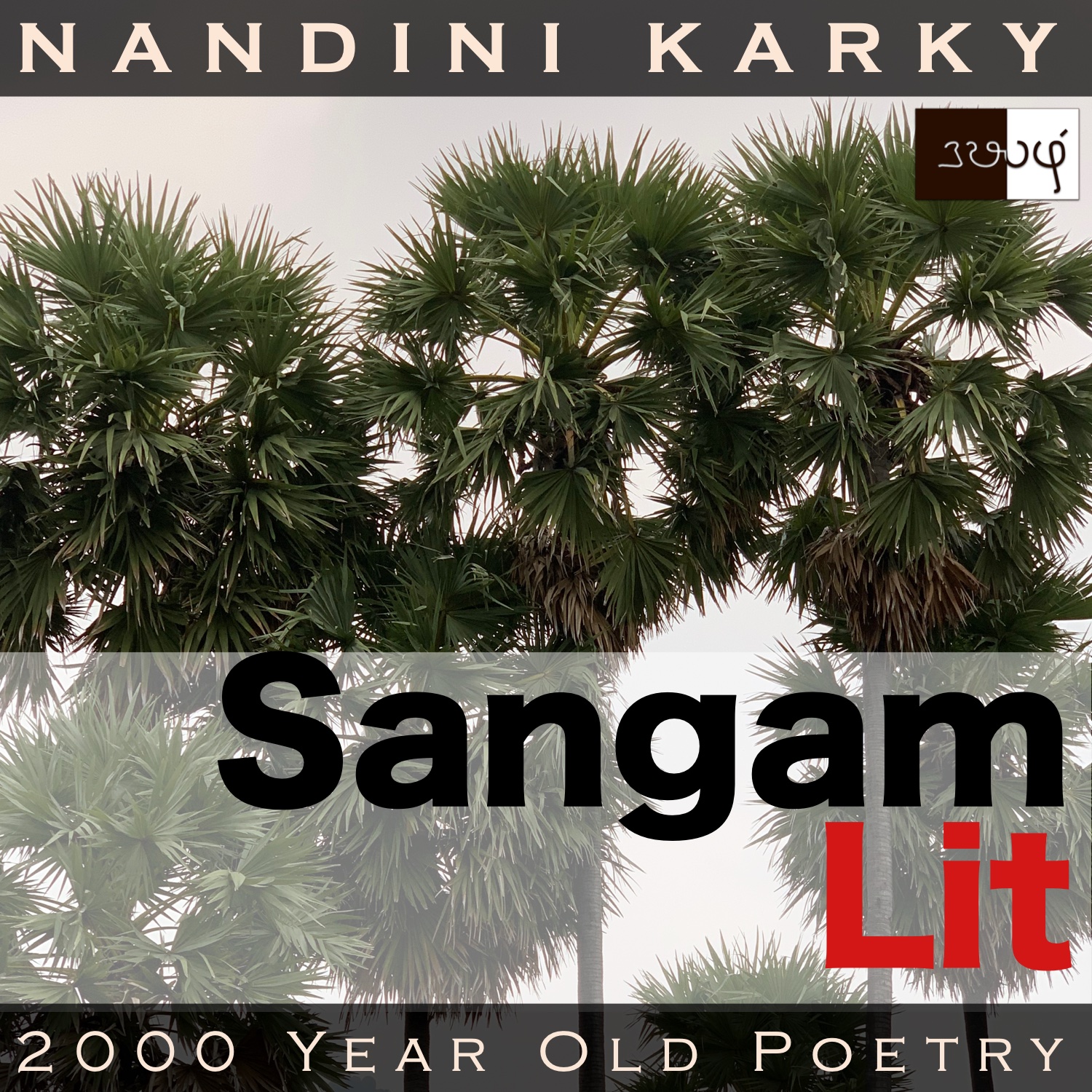Podcast: Play in new window | Download
Subscribe: Apple Podcasts | Spotify | Amazon Music | Android | iHeartRadio | TuneIn | RSS | More

In this episode, we relish a unique simile involving a bird’s actions, as depicted in Sangam Literary work, Kurunthogai 374, penned by Uraiyoor Palkaayanaar. The verse is situated in the mountains of ‘Kurinji’ and speaks in the voice of the confidante to the lady, explaining how the events unfolding in the lady’s life came about.
எந்தையும் யாயும் உணரக் காட்டி
ஒளித்த செய்தி வெளிப்படக் கிளந்தபின்,
மலை கெழு வெற்பன் தலைவந்து இரப்ப,
நன்று புரி கொள்கையின் ஒன்றாகின்றே-
முடங்கல் இறைய தூங்கணம்குரீஇ,
நீடு இரும் பெண்ணைத் தொடுத்த
கூடினும் மயங்கிய மையல் ஊரே.
‘Our confused town now becomes calm and united’ is the core thought here. The opening words ‘எந்தையும் யாயும் உணரக் காட்டி’ meaning ‘describing so as to make father and mother understand’ hint heavily on the theme of revealing a romantic relationship to the lady’s parents. In the phrase ‘நன்று புரி கொள்கையின் ஒன்றாகின்றே’ meaning ‘with an intention of doing good, it comes together’, an abstract notion and consequent action is portrayed. A special bird in the Indian subcontinent is the highlight of this verse and appears as ‘முடங்கல் இறைய தூங்கணம்குரீஇ’ referring to ‘a baya weaverbird with curving wings’. Ending with the words ‘மயங்கிய மையல் ஊரே’ meaning ‘the confused and twisted town of ours’, the verse beckons us into this territory!
A little weaverbird seems to have something deep to say! The context reveals that the man and lady were leading a love relationship and the man was trysting with the lady for a long while. One day, the lady observes some developments that seem to lead to her wedding. With wonder, she questions her confidante as to how all these came about. To the lady, the confidante replies, “Revealing it for father and mother to realise, after I openly shared the secret we had been hiding, the man from the land decked with mountains came and pleaded to them, and so, with the thought of doing good, it now comes as one. I speak of the confused town of ours, which had been in a state, more convoluted that the nest of a weaverbird with curved wings, situated high on a soaring, dark, palmyra tree!” With these words, the confidante informs the lady about the sequence of events that has led to the lady’s imminent marriage with the man.
When exploring this verse, I was confused for a long time, as to what could be the connection between a bird’s nest and a town! Let us unearth this connection by listening to the confidante’s words closely. She starts by saying that she went to mother and father and told them directly about the lady’s relationship with the man. You should understand that this action is an extreme step on the part of the confidante, probably taken because the lady’s kith and kin were either making preparations for the ‘Veri’ ritual or thinking about offering the lady in marriage to a stranger. Because of the detrimental consequences that would arise in the lady’s life, the confidante decides to reveal the secret love relationship of the lady to her parents. This made them understand what’s in their daughter’s mind, and because of this, when the man came with offerings to seek the lady’s hand, they were receptive and accepted his proposal. And that’s why, the town entire has come together, with a decision to do good, the confidante says.
After narrating the current state of the town thus, the confidante goes on to talk about the past state of this town. To bring alive this abstract emotion of a group of people, curiously she starts talking about real elements in nature, which is a weaverbird and its nest on a tall palm tree. She concludes by saying that their townsfolk were even more convoluted in their actions than that weaverbird’s nest. Without a doubt, the stunning element of this verse is how the nest of a bird is placed in parallel with the ways of the townsfolk. All this while, the people of that town had been weaving stories of slander about the lady’s relationship with the man, and acting in twisted ways, causing much pain to the lady. But these very people have now come together as one to celebrate the marriage of the lady with the man, the confidante implies.
To truly appreciate the unique detail in this verse, I decided to search for videos depicting how a weaverbird builds its nest. Fortunately, I found one. I learnt that this is no lazy bird, which will accept extension of last year’s nests, built by itself or other birds. The first thing it does is to clear the old nests hanging from its favourite spot on the palm tree. Next, it goes in search of blades of grass and one by one, it brings them over and with the magic hands of an expert tailor, the bird keeps tying these blades one after the other, in such a fashion that no human can replicate. With its tiny beak and minuscule neck movements, it turns this way and that way and manages to build this intricate and impregnable nest of steel, even as female weaverbirds hop about inspecting its workmanship and assessing the worth of this male bird as a mate. In human equivalents, it would be like if a woman were to say, ‘I will marry you only if you build me a skyscraper with your bare hands!’ Mind-boggling to even think about, but that’s how nature has made these weaverbirds evolve. Kudos to the observation and creativity of this Sangam poet who weaves nature’s creation with human emotion!




Share your thoughts...